My Favorite Ecuador Coffee: Café Cubanito
Looking for the best coffee in Ecuador? In this post, you’ll learn about our favorite brand and roast of coffee. This is significant for a country that produces a lot of coffee.
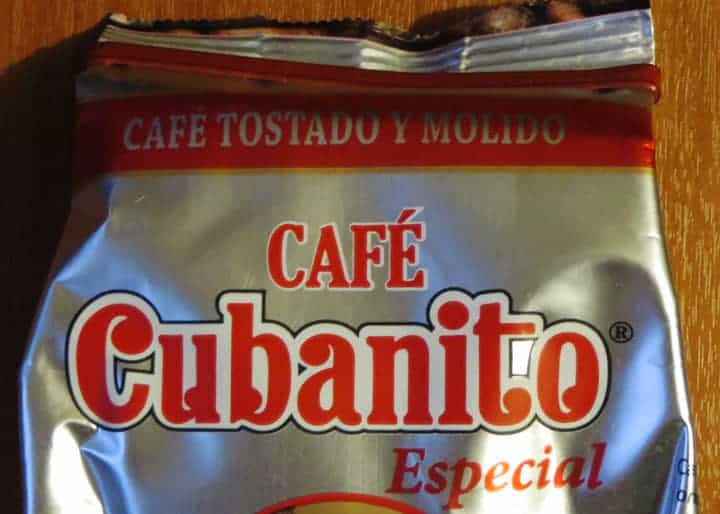
Ecuador’s Best Coffee
Coffee in Ecuador is an interesting paradox.
It’s produced here, but it is rather expensive and it can be hard to find a good cup.
We have tried just about every brand/type available. We’ve tried supermarkets, the open markets, and homemade (home roasted). We’ve found most to have a strong burnt taste and others tend to not be roasted long enough.
After testing and trying, we found a brand that we love.
Ecuador’s Cubanito Coffee
Café Cubanito is sold just about everywhere. The major supermarkets and the small corner-store tiendas all carry this brand. It can be bought in 4 or 5 different-sized bags – ranging from 50g up to 400g.
Back in Canada, we didn’t mind paying extra for good quality coffee. Here, the cheapest coffee is also the best. And because it is the least expensive, it is super easy to find. Cubanito also comes in a premium, un-ground bean. We haven’t tried this yet because we don’t have a good way to grind it.
Ironically, the best coffee in Ecuador is named Café Cubanito (which means: Little Cuban Coffee). Another of Ecuador’s most famous products – the Panama hat – is also made here in Ecuador.
Café Cubanito is one of the best things to buy in Ecuador before returning home.
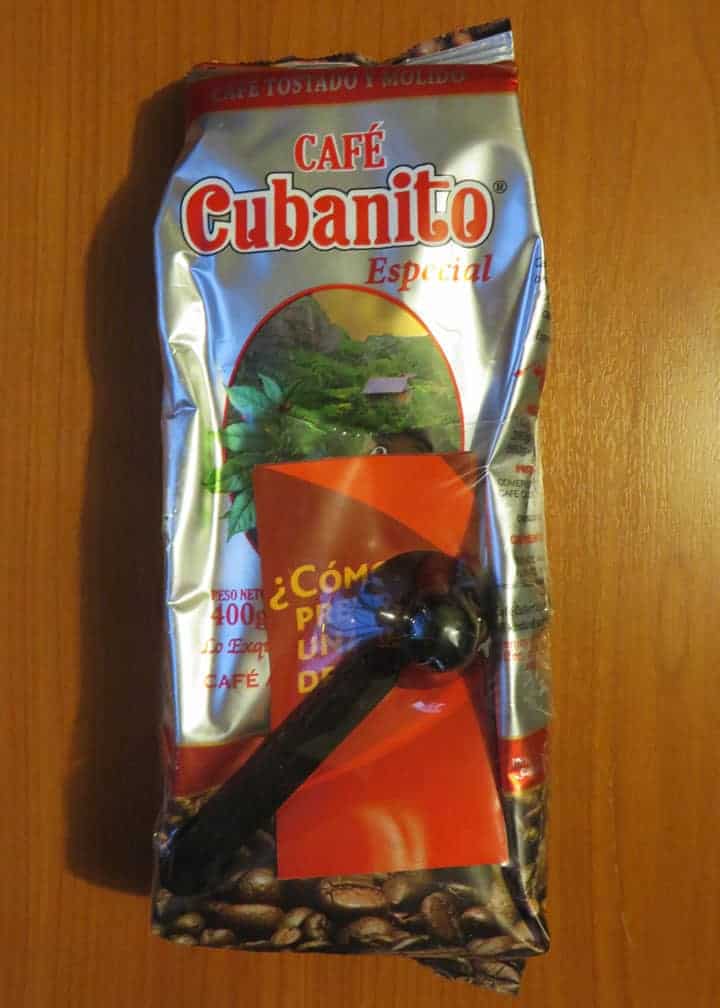
How to Prepare Coffee in Ecuador
For us, we prepare it the same as we did in Canada. We have a drip coffee maker and a Bodum stainless steel stovetop espresso maker which we brought from Canada.
The espresso maker is my favorite (in part because it was a gift from Dena, just before we moved here).
The steam process along with the Cubanito coffee produces a distinct aroma and a slightly chocolatey flavor. Just add a little panela (unprocessed cane juice) and you’ll have a mug of perfection – deliciously strong coffee.
We’ve also prepared coffee with the coffee sock (my terminology – I don’t know what it is actually called), a fabric coffee filter bag on a metal frame. It is the same idea as a coffee maker but without the automation.
You just pour boiling water into the sock which is full of coffee grounds and the coffee drips / pours through the fabric. We helped friends prepare gallons of coffee this way – the results are surprisingly good. We learned this method here in Ecuador.
We’ve also seen coffee prepared by pouring loose grounds into a pot of boiling water. The grounds mostly sink to the bottom and the coffee is taken off the top. This makes a very inconsistent flavor (from one batch to the next) and there are usually floating grounds in the coffee.
Ecuador Coffee at Local Restaurants
Despite having lots of local coffee options, many restaurants opt to use instant coffee machines – the ones that give a weird foam from the previous customer. It might be mochachino, café latte or herbal tea.
I don’t like to complain, but these Nescafe machines are disgusting unless you like a super-sweet artificial hot drink. The other option at many restaurants is Nescafe instant coffee.
Two restaurants in Cuenca that have good coffee are Fruitlados and Nice Cream (Tutto Freddos). Both are just off of Parque Calderon and are worth a visit. Although not yet in Cuenca, the popular Sweet and Coffee is also worth a try. You can find these in Guayaquil and Quito.
Coffee in Ecuador is Expensive
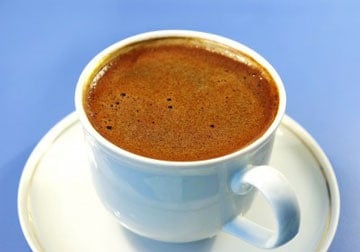
Compared to the price of Arabica coffee in Canada, Ecuador coffee is expensive.
- In Canada, a 1-kilogram tub of Folgers Classic Roast ground coffee costs between $7.99 and $8.60.
- In Ecuador, a 400g bag of Cubanito ground coffee costs between $4.60 and $4.85.
Given that coffee plantations are never more than a few hours drive from anywhere in Ecuador (it is grown in 10 of the 24 provinces: El Oro, Manabí, Loja, Guayas, Zamora Chinchipe, Pichincha, Orellana, Sucumbíos, Galapagos, and Napo) it shouldn’t cost more than in Canada (where it is all imported).
Other brands in Ecuador cost even more than Cubanito. A 400g bag at Supermaxi can cost as much as $9.00. In fact, Cubanito is the least expensive, mass-produced coffee in Ecuador.
Galapagos coffee is understandably more expensive – it is an obvious tourist souvenir and there are many limitations about farming on the islands that would make it more expensive to produce.
Colombia Buys Ecuadorian Coffee?
In researching this post, I learned that Ecuadorian coffee is exported to 29 countries, including Russia, Poland, Germany, Colombia (?!), Italy and the Netherlands accounting for more than 80% of total coffee exports.
We had purchased Ecuador grown coffee in Canada before we moved – although the grains were roasted in Canada.
Like eating? Then you’ll love our guide to Ecuadorian food
What Kind of Coffee Does Ecuador Grow?
Ecuador grows arabica and robusta coffee plants. Ecuador is one of only 15 countries that both grow and export arabica and robusta coffee.
If you are from North America, you might think that the only kind of coffee is arabica. And while it is popular there are other kinds. The second most popular type of coffee is robusta.
Here are the differences between arabica and robusta coffee.
I Like Ecuador Coffee How Much?
Every time we’ve left Ecuador for vacation, we’ve packed a few bags of our favorite coffee, Cubanito. A couple of months ago we enjoyed Ecuador coffee on the beach in Florida, and in a snowstorm in Canada. We’ve sipped Ecuador coffee while walking on the beach in Aruba and while road-tripping across the US.
So now you know. Coffee is my little obsession. Give Cubanito a try on your next trip to Ecuador. And it is definitely one of the best things to buy in Ecuador as a souvenir.
What is your favorite coffee? In Ecuador?



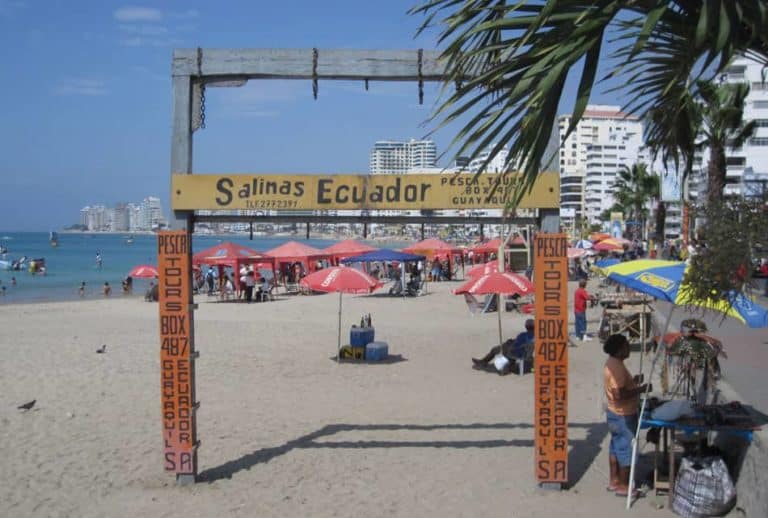
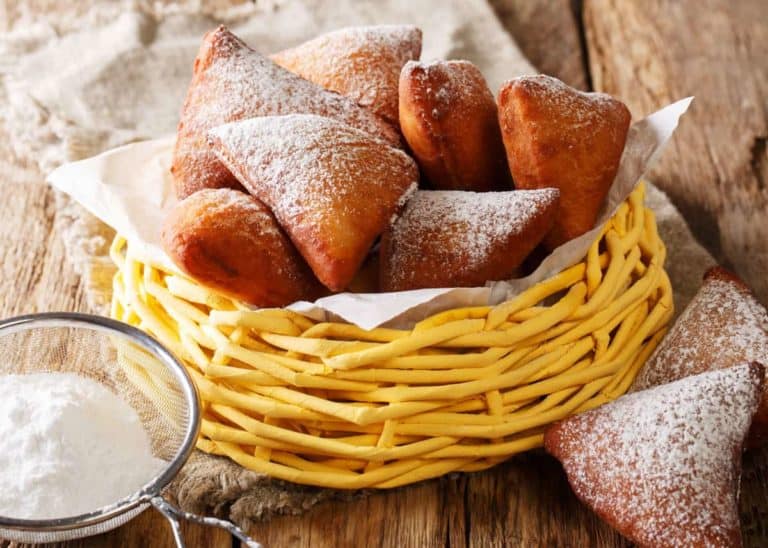

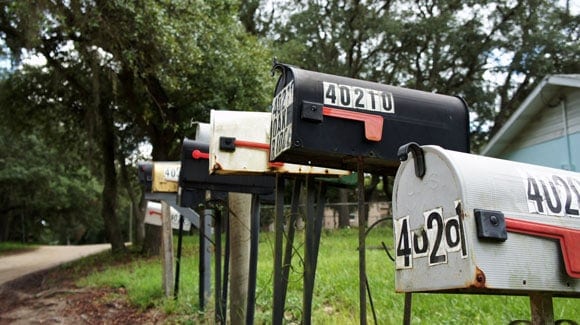
Thanks for sharing this article. A little history about the “Panama Hat”. It’s actual name is Sombero Montecristi; 100% handmade with Toquilla straw. Francisco Delgado who is credited with having originated the Panama Hat in the Monticristi Manabi district of Ecuador in the 17th century. It was popularized as it was famously pictured with President Teddy Roosevelt when he visited the Panama Canal. The name was credited for the country that exported it rather than the one that originated it.
Thanks Jorge! Here’s a little more about the Panama hat in Ecuador.
I’ve tried Cafe Cubanito and for some reason I didn’t like the taste. It was purchased 3 weeks after packaging date so assume freshness was not an issue. I guess we have all different preferences. However, I’ve tried many different coffee brands from different locations of Ecuador and they were mostly excelent or at least very good. Right now I’m drinking El Zarumenito – Un cafe de altura from El Oro province (La Hoya de Zaruma mountain) that I bought at SuperMaxi and really like it. I would say it has nutty taste with a hint of caramel. I think it was like $4 for 450g. Anyone who wants to try great coffee for very low price I would suggest Cafe Gomez Super Especial. It’s from Loja and Manabi provinces and cost around $1.50 for 200g. Since the low price the packaging is cheap too and coffee will not remain fresh for very long so make sure to check the date of packaging before purchasing. They sell it in Santa Maria Supermarkets.
As an Ecuadorian and a coffee addict, I can assure that Café Cubanito is the best brand in Ecuador so far. I also like Sweet and Coffee and other coffee brands from Loja and Zaruma cities are also good options, but definitely Cubanito es the best arabica coffee here.
I couldn’t agree more! I only wish we could get it here in Canada.
Bryan,
Thank you for your insights. I have a few place to add that make a really good cup of coffee in Cuenca as well: Cafe Nucallacta, Mozart’s, and Sinfonia (they even roast their own on site). In addition to great coffee, the owners of the establishments take great pride in what they serve.
Hi guys, I’m an avid reader of your blog since I’m from Cuenca and I love to read about my city and my country and to be honest you make me feel a little closer to home… I miss a lot of things and food from Cuenca and my coffe is the one I miss the most, I was so surprised to read about cafe cubanito here and doing a little browsing and digging I found it on amazon and I’m so happy!… I know I may be a little late since this post is a bit old but anyway I’m leaving the link here in case someone wants to try it.
Cubanito Coffee Ecuadorian gourmet ground coffee. Cafe Cubanito de Ecuador.
Thanks for sharing. I bought this recently and the quality is amazing!
Does Supermaxi sell it?
Nº, as far as I know only Santa Maria and Hypermercado Coral sells it in Quito, good luck it is worth the search if you like tast coffee instead of a brown bitter brew……
I totally agree that Cubanita is the very best coffee here in Ecuador, unfortunately it is very difficult to find, everybody drinks horrible instant coffee, a real cup of coffee is difficult to find. I now live in Esmeraldas and am still searching for my delicious fragrant and reasonable priced Cubanita…… Tried many other brands in despair, all the same like the most popular brand here: Selo Rojo, bitter and no flavor.
Being from the US myself I wonder why anyone would call their coffee Cubanito , when the coffee is not from Cuba. Here in America there is no Cuban coffee imported from Cuba yet people tend to call it Cuban coffee. As I grew up it was always referred to a cup of Espresso. Its offending to other latin countries that they would assign a name other than where it is originally from. Why not call it from Ecuador instead?
That’s a good question – we’ve wondered the same thing. From what I’ve seen, Cubanito is an anomaly. The other coffee brands use local names and locations.
I get it though. My parents were from Ecuador, I grew up in NYC addicted to all sorts of coffee but our favorite treat would be to go to a Cuban restaurant and order a “cafe cubano”. The fact that they call this particular brand “El Cubanito”, I’d surmise that it’s bold and strong like a Cuban coffee. It doesn’t offend me in the least and Ecuador is pretty much the motherland :).
Montanes cafe en grano, Lojano
Just curious, do you know where if anywhere I can find Cafe Cubanito in Quito? I live just outside of Quito and went to Megamaxi and they do not sell it there. I was kinda bummed.
Mega Maxi never sells it, Santa Maria Supermarkets do as well as the Coral Hypermercados, that is where I always buy it, good luck
Thank you Bryan for discussing the part about the exports in your article. It is unfortunate that many locals are unable to afford to enjoy “quality” coffee regularly, especially those countries in the “coffee belt”. Most are developing countries and given the size of the global coffee trade, it’s boils down to a matter of supply and demand which affect prices greatly. You are correct that over 80 % (81.8% according to the 2015/16 total production statistics) are for export.
As a result, a little over 18% is left for local consumption at approx. 9.3 million kg. While that sounds like a lot, Ecuador is home to 15.9 million putting the per capita consumption at 0.58kg. This is really low for a country that consumes a lot of “coffee”. Although not everyone drinks coffee, esp. younger children, a considerable segment of those drinking local high-grade Ecuadorian coffee are geared towards tourists (I’m thinking hotels and high-end outlets and not so much the restaurants with the horrid Nescafe contraption you mentioned).
Interestingly, that Nescafe instant coffee stuff you mentioned explains a lot. Ecuador actually imports a lot of the low grade Robusta from countries such as Vietnam for local consumption – and as you alluded to, mainly soluble coffee. Most of the good stuff is for higher paying markets – including Ecuador’s home grown but better Robusta! Sounds counter-intuitive but in the end, it is all about money.
Nice! I’m pretty excited to try some of that cheap but tasty Ecuadorian coffee!
I’d really urge you to grind it yourself just before you decide to brew it – I have found (and many other coffee snobs will agree with me on this) that if you brew within 15 mins of grinding, you get to taste the flavour of the bean to its fullest!
You can get tiny little hand grinders online these days that make grinding coffee while travelling quite possible.
Where can I purchase Don Marcelo coffee sold in Equador.
Hi Bryan and Dena,
So funny I came across your recommendation for cafe Cubanito. I am on a budget so when I was looking for the cheapest brand I picked this coffee to try. When I opened the bag and the heavenly scent wafted put, I knew I was on to something.
We had Lava Java when in the Galapagos. It was very good! We will have to try Cubanitos the next time we head to Ecuador. My wife and I are coffee afficianados! Thank you for your cool-o Blog! Dave
Thanks Dave!
Here in the U.S., I’ve been paying $11 for a bag of coffee lately; $3-$4 per bag sounds like a great deal. I’m hoping to spend some time in Quito as I want to work toward my goal of becoming fluent in Spanish. I’ll look for Cubanito and try it if I can find it! I love your blog because there are so many articles that address daily life…something that’s often overlooked in most travel information. Heartfelt thanks for all you do. It really is appreciated.
Good thread about one of my favorite subjects. We drink only espresso and use a Rancilio Sylvia machine and a Rancilio Rocky grinder. Ecuadorian beans tend to be very soft, and make it difficult to get the grind right for the Sylvia. We don’t have this problem with beans from other countries.
Those who grind their own beans should avoid those that have been roasted with sugar. They will damage your grinder’s burrs.
I thought you could have written about the different ways coffee is made in Ecuador. For example, in Cotacatchi, we had coffee at the local market and they give you a steaming cup of milk with instant coffee on the side. While in Zaruma, at our b&b, they also serve you a steaming cup of milk with expresso on the side.
BRYAN,
I AM VERY INTERESTED IN IMPORTING CUBANITO TO THE US IN LARGE QUANTITIES FOR RESALE.IS THIS A POSSIBILITY AND WHO WOULD I CONTACT TO FOLLOW UP ON THIS INTEREST?
THANK YOU.
BRYAN,
COULD YOU PLEASE EXPLAIN TO ME WHY IT HAS BEEN SIX DAYS AND MY COMMENTS ARE STILL WAITING FOR MODERATION? SIX DAYS?
It was delayed because I wait to approve comments until I have a thorough answer to provide. Otherwise, the question gets lost among the thousands of others.
Thank you for the explanation for the delay Bryan.
Cubanito Coffee is distributed by Ortiz y Jácome in Cuenca. You can contact them via their site https://jacomeyortiz.com/ Here is the sales page for their coffee.
Bryan.
I would like to thank you for the information that you provided to me concerning the distribution contact for Cafe Cubanito. Also I would like to thank you for Gringos Abroad as it is one of the best or the best on Ecuador and Cuenca.Please continue providing us with the wonderful perspective of a beautiful country and the beautiful communities within it.
Thanks David. It’s our pleasure!
Let me know how you make out with the importation.
Bryan
Hi, Did you find out any information about importing the Café Cubanito? We just spent a month in Perú and Ecuador; this coffee was recommended to us by a waiter, and we have really enjoyed the pound that we brought home. We would love to find more! Thanks.
cafe cubanito 074024444
So far, my favorite coffee shop in Cuenca is Maria’s Allemania Cafe, the German bakery with wonderful danish’s on Hermano Miguel – this includes Ñucallacta and Wind Horse Cafe, btw. Though all three of those serve good coffees, I am still looking for the perfect brew.
At home, Peet’s Sumatran in a Melita filter produce a nice cuppa, milk no sugar please.
Love this thread! Will try Cubanito, for sure. I am mostly concerned about world peace, but good coffee runs a close second, and would be quite helpful in accomplishing that mission! We just moved to Cuenca from Vilcabamba, and brought with us, 4 lbs of Malacatos whole been torrefacto roast beans ($3/lb). Torrefacto is a roasting method that involves adding a small amount of sugar to the beans during roasting. http://en.wikipedia.org/wiki/Torrefacto This does NOT make the coffee taste sweet; rather it deepens the character. Warning: if you don’t like Starbucks dark roast, you wont like torrefacto roast. Would love to get a machine like Brian’s, but I enjoy french press method.
FYI – You can get a french press way cheaper than Su Casa or Total Hogar at Solis Commercial (small appliance branch) for $8 …you get a one liter glass and metal press and four little matching cups and the bonus is …after one month of daily use it is actually still working! Store is on South side of Mariscal Lamar between Machuca and Ordenez …inside and behind a small parking garage?!
Never seen the Cubanito anywhere, but if I do, I’ll give it a shot. Though, it appears to be mass-produced and not-at-all organic. I just can’t go for that.
My favorite coffee in Ecuador is the Alma Lojana.
But the best cup you can get is at la Universidad Los Hemisferos, in Quito. Andres, the owner of the ecuadorian coffee academy franchise is offering the only real gourmet coffee in Ecuador, as far as I know.
We’re planning to come to Ecuador this Fall for a few months–we’ll definitely try Cubanito. My husband has created an interesting sock holder out of an old metal hanger–maybe I’ll look into a stove top espresso maker, for luxury.
Thanks for the information on coffee. I just added it to our shopping list for when we get down there to stock our pantry. We enjoy your posts and writings.
We brought some Cubanito home from Cuenca after being turned on by our friend E. It is good. Here in the states we drink a French roast from Cameron’s specialty coffee. We buy the beans and grind before each pot. I am glad to hear Cubanito has whole beans as we will be moving to Cuenca soon.
We are also looking forward to sharing a cup or two with you when we arrive.
After 3 years in Ecuador I have to agree with John and Joe – Cafe ñucallacta across from Iglesia Todo Santos has the best coffee beans in Cuenca. Rumi, the owner really know how to roas the beans and grinds them to your specifications.
Thanks Bryan. I have been looking for a good coffee since we arrived here in Manabi province a month ago. I will look for Cafe Cubanato in stores here along the coast.
Cheers
Hi Guys,
I haven’t tried Ecuador coffee yet but will certainly try that Cubanita brand when I come to Ecuador in September.
The best coffee I have had to date was in Costa Rica near Manuel Antonio. There was a small coffee roaster in the town and they produce the Sun Burst brand which they ship to NA as well as sell locally. It’s expensive though but worth it.
Haven’t you tried the different Loja coffees at Cafe Nucallacta? They grind to your specs and I think the coffee is fresher and better than Cubanito.
We currently drink Costa Rican coffee, imported and roasted here in Florida. In the next few months we’re moving to Ecuador, (somewhere around Cuenca) and will be looking for a new coffee. Will try Cubanito. We already opened our file for residency, so we’ll see you soon. Love your blog. We have gotten much info from it. Thanks
I like Nucallacta coffee from their little shop on Calle Larga. I buy obscuro roast, whole bean. It is a rich, substantial coffee. Price just went up to $3.99 for 400 gr.
Café Ñucallacta sells the best coffee in town IMHO. Their prices are great, the owners and staff are friendly, and it’s a great place to stop and enjoy a cup.
Thanks for the great article. My wife and I love a good coffee as well. We live in Ibarra and Supermaxi does not carry Cubanito. For us the best available coffee is grown in Rio Intag , not too far from Cotacachi. So, there is one more province, Imbabura, where coffee is cultivated. We buy the the Expresso beans Selecto in a green bag, $ 7.50 for 375 gr. As you mentioned, coffee is expensive here.
For restaurants, Cafe Intag (Eddy’s) in Cotacachi has the best brew, followed by cafe Olor in Ibarra. There might be more locations with acceptable coffee, but we haven’t found them yet.
Starbucks please come to Cuenca
I’m a little obsessed with coffee too. I live in Chaco and sad to say we don’t have The Cubanito. We actually don’t have much of anything here so we do most of our shopping for special items in Quito. The super and mega maxi’s in Tumbaco, Cumbaya, and a few I’ve been to in Quito don’t carry it either. I would love to try it. I really like Sweet & Coffee and Juan Valdez espresso blend in whole beans. I use a tipical molino that the locals use for grinding morocho. It works great! I even think the coffee tastes better than when I grind it in my electrical grinder I brought from the states.
We’ve enjoyed both the Sweet & Coffee and the Juan Valdez as well. Sweet & Coffee is just like a great coffee shop back home.
You’ll have to pick up a bag of Cubanito the next time you travel to the southern sierra. I didn’t realize that it wasn’t sold nationally…
exactly… you can’t find this brand and the main cities like Quito and/or Guayaquil, seems to be a local brand in Cuenca.
Regards.
I lived in Tumbaco and the Santa Maria there sells Cubanita coffee, once you taste that you forget the bitter brew from Sweet & Coffee made from Selo Roja I fear, blah!
I now live in Esmeraldas and tried more brands all equally bitter and flavor less.
Maybe someone here can tell me where to get Cubanita in this part of Ecuador, e mail and other links do not work.
Great article! Can I buy you a cup of coffee? 😉
Have you been reading BloggerAbroad? 🙂 Next time you’re in Ecuador, we’ll buy you a coffee!